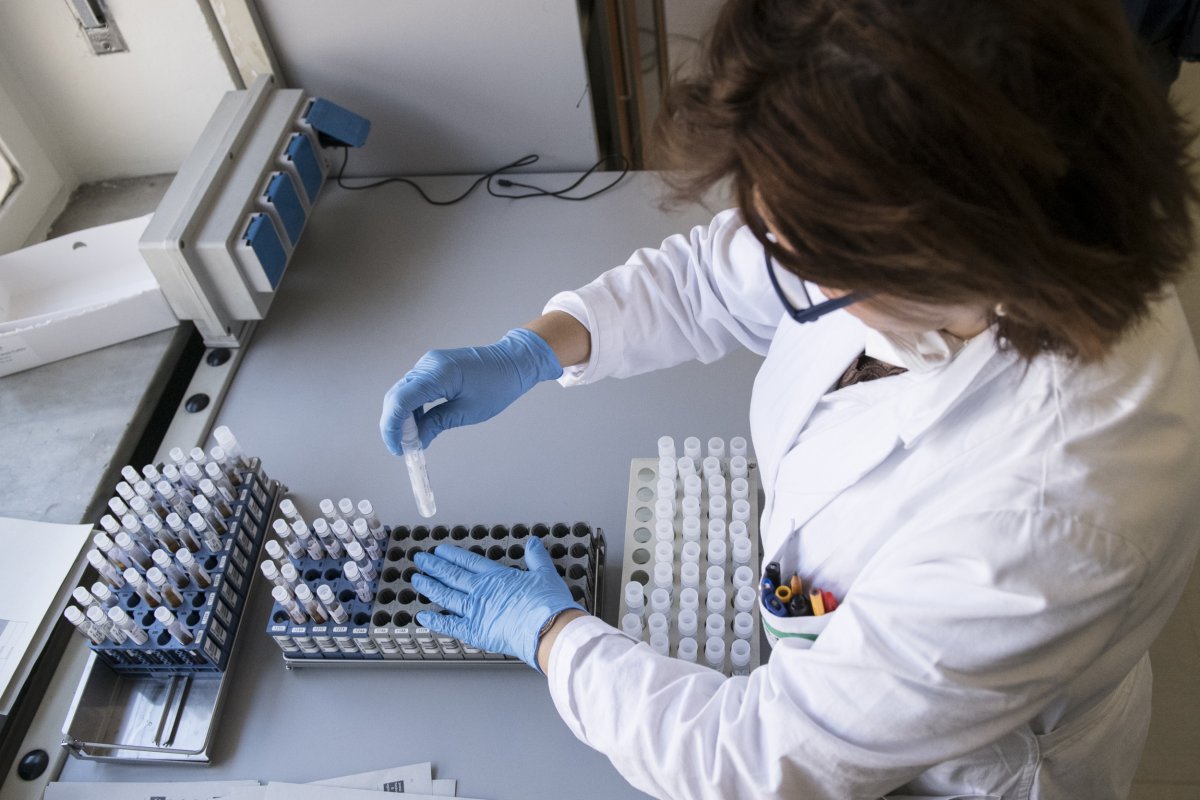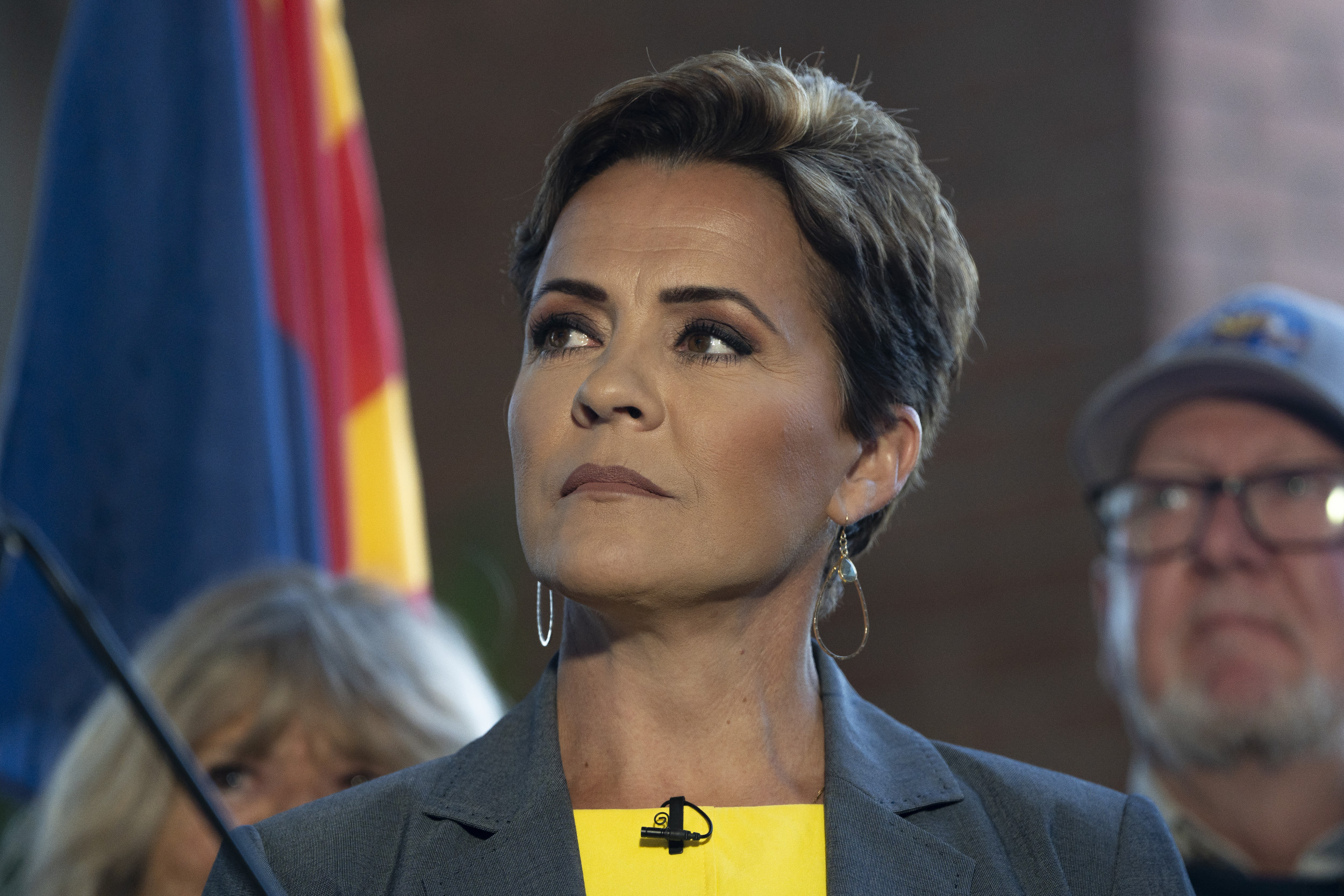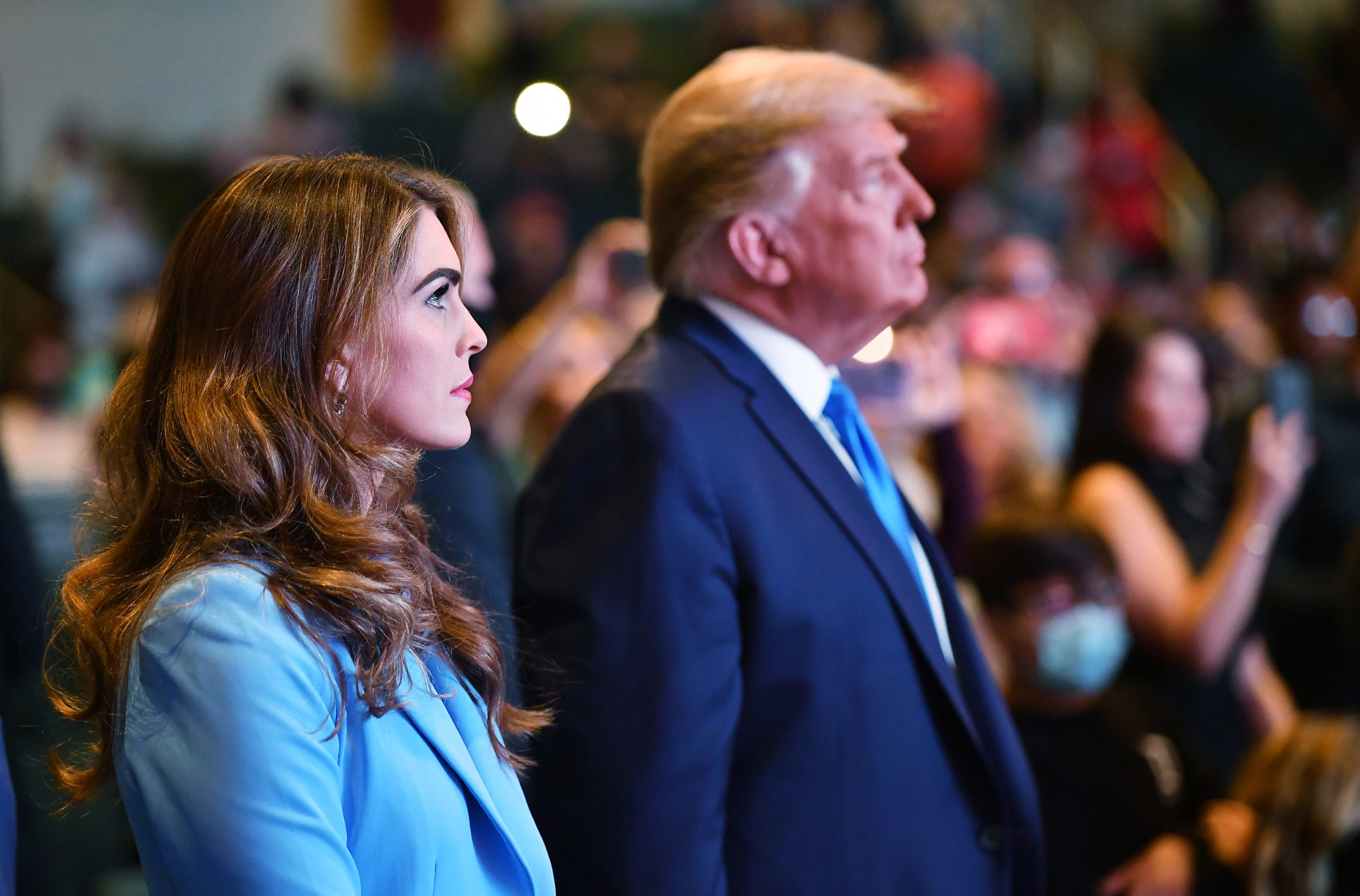Experts fear a "broken" system for testing suspected cases of the deadly new coronavirus in the U.S., which has reached more than a dozen states, has set the country back in containing the disease and enabled it to silently spread.
Following weeks of setbacks with screening for COVID-19, the head of the White House coronavirus task force, Vice President Mike Pence, told reporters in Minnesota on Thursday according to CNN, "We don't have enough tests today to meet what we anticipate will be the demand going forward." Earlier in the week, Pence told media at the White House screening restrictions had been lifted so "any American can be tested" for the illness, according to The New York Times, although the U.S. Centers for Disease Control and Prevention told Politico that capacity on Tuesday stood at 15,000, and was expected to rise to 75,000 this week.
Thursday's admission came after the head of the Food and Drug Administration (FDA) Dr. Stephen Hahn told a White House press briefing on Monday that industry estimates indicated "by the end of this week, close to a million tests will be able to be performed," The New York Times reported. Hahn said there would be a "substantial increase in the number of tests this week, next week, and throughout the month" after the agency said it would allow private laboratories and companies to make their own tests to increase capacity.
Asked whether the U.S. would hit its million test goal, Pence spokesperson Katie Miller told CNN on Thursday, "We're not missing it."
But experts have told Newsweek snafus have lost the country precious time in controlling the spread of the disease. Earlier this week, the CDC controversially stopped reporting the number of individuals who have or are being tested for COVID-19, explaining on its website "now that states are testing and reporting their own results, CDC's numbers are not representative all of testing being done nationwide." While the health agency's website (accurate as of March 5 and due to be updated at noon today) reported a total of 99 cases across 13 states, a dashboard maintained by Johns Hopkins University pooling data from the CDC as we as local health departments put the figure at 233. The New York Times tracker said people with COVID-19 have been treated in 20 states, and 14 have died.
Medical doctor and former Democratic candidate for U.S. Congress Dena Grayson, who played a role in the development of drugs to treat the deadly Ebola virus, told Newsweek: "the government has made some blunders in our pandemic preparedness by not quickly deploying functional coronavirus testing kits nor having sufficient testing capacity early on, when containment (via contact tracing and quarantines) would have been much more feasible."
Testing is vital for three reasons, Sanjaya Senanayake, professor of infectious diseases at The Australian National University, told Newsweek. "Firstly, to ensure that they [patients] are treated properly so they can recover from the illness, but also to get them into isolation before they can infect other people." Thirdly, he said, individuals who come into contact with the sick need to be found and tested to ensure they are isolated if and when they become infectious.
"The problem here is that if testing of people who should have been tested wasn't performed, then those people who get sick will go on to infect others," he warned. "This means that by the time this is realized, then the outbreak might have had weeks to spread in the community, leading to potentially hundreds or thousands of cases."
To complicate matters, COVD-19 only seems to cause mild disease in 80 percent of people, Senanayake said. "While this is good news for clinical outcomes, it is bad news in terms of controlling the outbreak, because mild cases won't get recognized and isolated/treated, unless they are tested," he said.
Getting people tested is doubly important at a time when there is no vaccine or treatment for COVID-19, said Dr. Ranu S. Dhillon of the Division of Global Health Equity at Brigham and Women's Hospital, Harvard Medical School. Pointing to a preprint study he and colleagues conducted which has not been peer reviewed, he told Newsweek, "From modeling we have done, sufficiently slowing COVID-19 transmission without a vaccine would require detecting 80 percent of new infections within a day of developing symptoms."
On the attempts to expand testing, Dhillon said, "The measures being taken are incremental when we are already behind in this epidemic and the steps needed much more aggressive. ... We are so behind the ball—this epidemic has likely been expanding silently and off-the-radar for some time."
Dhillon added, "The lack of testing has made it impossible for us to know just where and how widely COVID-19 is here. Because COVID-19 causes generic symptoms like fever and cough, virtually any of the thousands of patients developing such symptoms every day could be infected and should be tested, similar to what we do for the flu." Compounding problems in the U.S. and around the world is a lack of a point of care test, which would deliver rapid results within minutes or hours, according to Dhillon.
When the virus first emerged from the central Chinese city of Wuhan, Hubei province, in late 2019, the U.S. Centers for Disease Control and Prevention (CDC) started working on a way to detect the mysterious new virus in suspected patients. When it was beaten by scientists in Germany in mid-January, it didn't adopt their test even after it was accepted and distributed by the World Health Organization, The New York Times reported.
"It's just a very American approach to say, 'We're the U.S., the major U.S. public health lab, and we're going to not follow the leader,'" Dr. Michael Mina, Assistant Professor at Harvard University's department of Epidemiology told The New York Times.
In the first week of February, the CDC said it would administer 200 kits, each capable of testing 700 to 800 patients, to labs across the U.S. with the intention of improving "the global capacity to detect and respond to the 2019 novel coronavirus." But a week later the CDC said a number of kits sent to public health labs were flawed, with negative controls bringing up a response when they shouldn't have. The CDC asked labs not to use the kits, and advised health departments to send samples to the agency's headquarters in Atlanta. According to Science magazine, this meant labs with the capacity to test for COVID-19 were unable to.
Around this time, the CDC said it would start what is known as surveillance testing in potentially at-risk cities of New York, Chicago, Los Angeles, San Francisco, and Seattle, where flu patients would be tested for the new coronavirus in an attempt to spot the bug among those with no known contact with a hotspot or infected individual. According to ProPublica, which spoke to state and local public health officials and scientists across the U.S., that had still not started on February 28 due to the issues with the kits.
Partly due to the lack of surveillance testing "we have such little clarity on just where and exactly how widely COVID-19 is spreading in the U.S.. The number of cases could be quite high," said Dhillon.
For a time, only 12 labs outside the CDC in California, Illinois, Nebraska, Nevada, and Tennessee were able to test for the virus. And the patients who were tested had to meet strict criteria: either having travelled to China or being in contact with an infected person.
David Beier, managing director of Bay City Capital, who previously served as chief domestic policy advisor to then-Vice President Al Gore, told Newsweek, "The testing process has been broken, and massive efforts are necessary to get enough screening kits out there at scale."
The human cost of the problems came to the fore last week. On Wednesday, it emerged a suspected COVID-19 patient in California wasn't tested for days because she hadn't travelled to China or been in contact with someone infected. A day after a person in Washington State became the first person to die of COVID-19 in the U.S., on Sunday researchers revealed that genetic tests on two cases of the new coronavirus in people who had no known contact with each other indicated the germ could have been circulating there for up to six weeks.
Professor Jeff Duchin, the health officer for public health in Seattle and King County Washington where a total of 10 people have died, said, "If we had the ability to test earlier, I'm sure we would have identified patients earlier."
Last week, the situation on testing moved quickly in an apparent attempt to remedy the situation. Testing criteria was expanded to include those with a history of travel to areas of sustained and widespread transmission, including Iran, Italy, Japan and South Korea. The number of labs which could test for COVID-19 went up to 40, with the figure set to hit 93, Health Secretary Alex Azar said according to NPR. And the FDA allowed members of the Association of Public Health Laboratories to use their own tests, and to safely ignore the faulty part of the CDC kit. That eased pressures caused by the CDC's declaration of the new coronavirus as a public health emergency. The move had set off federal laws on testing meaning labs which had followed steps laid out by the CDC still had to check their tests with the FDA.
"FDA, in other words, would look the other way to make more widespread testing possible," according to Science magazine.
On Sunday, Scott Becker, CEO of the Association of Public Health Laboratories said over 100 labs would be ready to test for COVID19 by the next week.
"As the testing increases, what we may uncover is essentially how the virus has marched into America," he told The Washington Post.
But experts told Newsweek that while the measures mark a positive step forwards, it's too late to make up for the costly mistakes.
"I do not think the U.S. government is testing enough people for the coronavirus," Dr. Amesh A. Adalja senior scholar at Johns Hopkins Center for Health Security told Newsweek. "The capabilities have increased but not rapidly enough."
Senanayake compared U.S. efforts to those of other countries. "Whereas toward the end of February the U.S. had only tested just under 500 people, other countries had been testing thousands to over a million people."
South Korea has tested at least 140,000 people in part using drive-thru testing facilities, the U.K. over 18,000 people, while China is reportedly screening 1.5 million people a week, said Dhillon, explaining, "To halt COVID-19 transmission, you would need to test at least 10 times if not much greater the 1 million tests we do for flu [in the U.S.]. The bandwidth to do that is simply not there right now."
Grayson warned there would be a "massive surge" in COVID19 cases throughout March, initially due to the increased testing capacity, but also because the virus has likely been spreading within U.S. communities for at least three weeks based on the timing of the clinical cases, as some patients exhibited symptoms for around one week on top of the two-week incubation period.
Lauren Sauer, Assistant Professor of Emergency Medicine at Johns Hopkins Medicine, is concerned healthcare providers won't be able to cope with what Grayson forecasts. She told Newsweek, "Our delay to widespread testing has given rise to a major vulnerability for the U.S. healthcare system.
"It will be an enormous burden to suddenly identify and have to isolate the cases we are likely to discover have already been spreading in the U.S. due to testing delays."
And despite the progress, Dhillon is still worried, suggesting the testing blunders are symptomatic of a "longstanding lack of preparation for this type of scenario" from "the array of U.S. government agencies responsible for being prepared for responding to outbreaks and epidemics." For instance, a global health security team at the White House's National Security Council was disbanded by then-national security advisor John Bolton in 2018.
The CDC and NIH have done "great and important and valuable work to mitigate the risk of an epidemic," said Dhillon, "but have not developed a strategy for nor the tools for responding to this scenario: a novel pathogen that causes nonspecific symptoms for which a vaccine will be months to years away and that is spreading beyond known transmission chains."
Dhillon opined, "Given the experience of Ebola in West Africa and other recent outbreaks, it was inevitable for that exact scenario to arise which has long-been a lacuna in our preparedness strategies and efforts," adding: "We are seeing the lack of strategy and preparations for it playing out now."
Newsweek has contacted the White House, CDC, FDA, and HHS for comment.

Uncommon Knowledge
Newsweek is committed to challenging conventional wisdom and finding connections in the search for common ground.
Newsweek is committed to challenging conventional wisdom and finding connections in the search for common ground.
About the writer
Kashmira Gander is Deputy Science Editor at Newsweek. Her interests include health, gender, LGBTQIA+ issues, human rights, subcultures, music, and lifestyle. Her ... Read more
To read how Newsweek uses AI as a newsroom tool, Click here.








